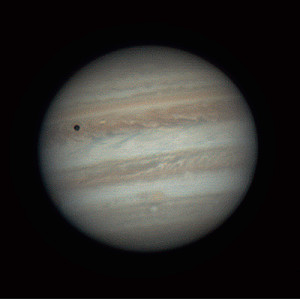Glossary term: 淩
Description: 當一個天體穿過另一個角大小較大的天體和觀測者之間時,就發生了凌星。從觀測者的角度看,遮擋天體移動到被遮擋天體的前面,阻擋了被遮擋天體表面的一部分視線。如果從觀測者和被遮擋天體之間經過的遮擋天體的角大小大於後者,這種情況被稱為掩星,而不是凌星。對於同一系統,被一個觀測者看到的凌星現象,可能不會被另一個來自不同角度的觀測者看到。
在太陽系中,從地球上看水星和金星有時都會凌日。從地球上看,繞太陽系行星運行的衛星經常會穿過其所繞轉行星的表面。
環繞其他恆星運行的行星(系外行星)通常是在凌星時被髮現的,它們會遮擋住恆星的部分光線,從觀測者所在位置看去,恆星會顯得略微暗淡。只有當行星的軌道平面與地球的視線相交時,從地球上看繞恆星運行的行星才會凌星。因此,用凌星法尋找行星只能探測到銀河系中的一小部分行星。凌星還可以用來估計系外行星的大小。
Related Terms:
See this term in other languages
Term and definition status: The original definition of this term in English have been approved by a research astronomer and a teacher The translation of this term and its definition is still awaiting approval
This is an automated transliteration of the simplified Chinese translation of this term
The OAE Multilingual Glossary is a project of the IAU Office of Astronomy for Education (OAE) in collaboration with the IAU Office of Astronomy Outreach (OAO). The terms and definitions were chosen, written and reviewed by a collective effort from the OAE, the OAE Centers and Nodes, the OAE National Astronomy Education Coordinators (NAECs) and other volunteers. You can find a full list of credits here. All glossary terms and their definitions are released under a Creative Commons CC BY-4.0 license and should be credited to "IAU OAE".
If you notice a factual or translation error in this glossary term or definition then please get in touch.
Related Media
木星、木衛一及其陰影,作者:Ralf Burkart,德國
Credit: Ralf Burkart/IAU OAE
License: CC-BY-4.0 Creative Commons 姓名標示 4.0 國際 (CC BY 4.0) icons









